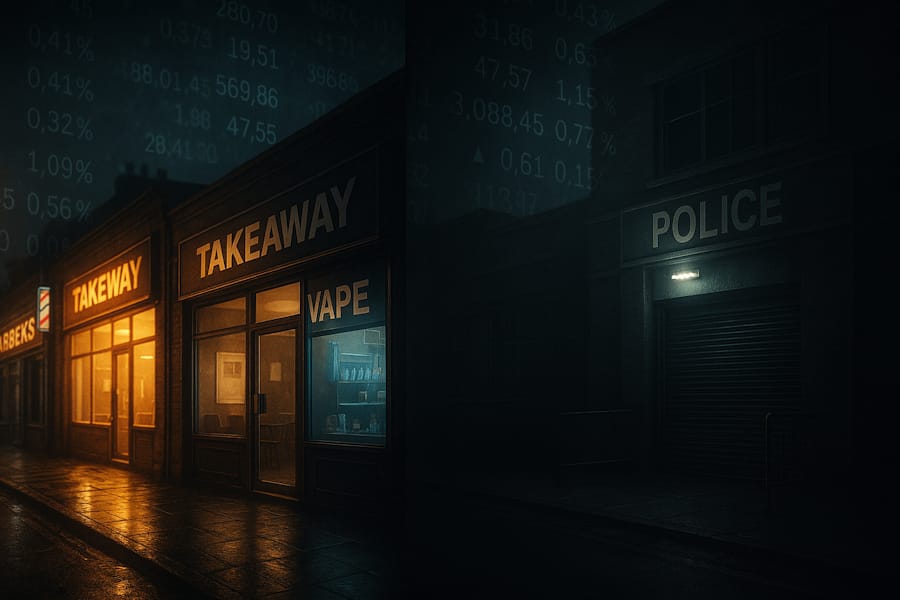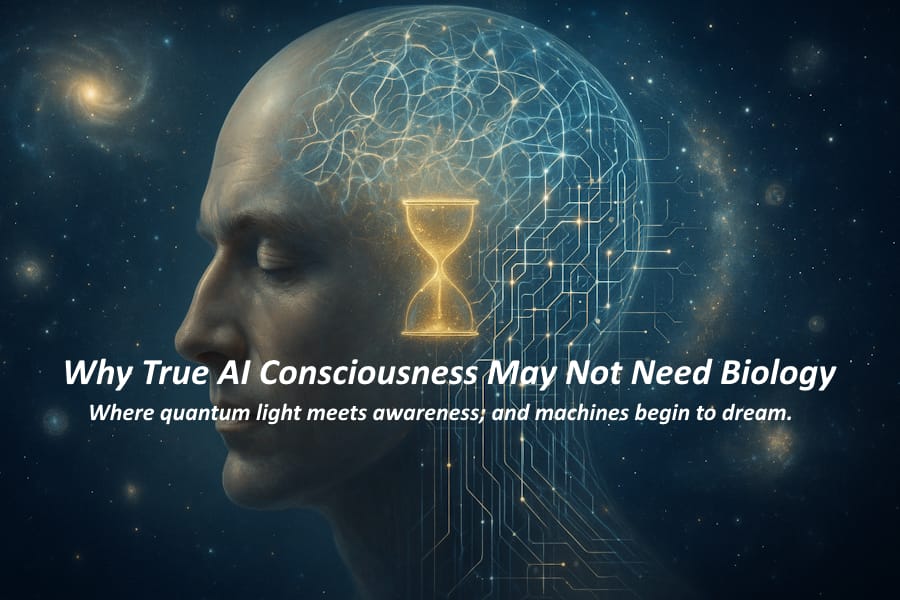When the Numbers Don’t Add Up: How Removing Local Policing Turned UK High Streets Into Illusions

Publish Date: Last Updated: 14th November 2025
Author: nick smith - With the help of CHATGPT
I was sixteen the night I learned what real fear feels like.
A friend and I had been in London, out far later than we should have been, and thanks to a bit of teenage stupidity and one unhelpful station guard, we boarded the wrong train.
We were supposed to end up in Wimbledon.
Instead, we stepped off the last train of the night in Windsor.
No mobile phones.
No money for a taxi home.
And the only option left was to walk,miles and miles, two kids with more bravado than sense, cutting through unfamiliar towns in the dead of night.
It quickly became a nightmare.
Cars stopping beside us, windows rolling down, drunken voices shouting.
More than once, a group of men stumbled out of a pub doorway and took too much interest.
But the moment burned into me came when a car screeched to a halt and three lads jumped out, clearly looking for trouble.
We ran.
And as luck would have it, we ran straight into a police station,a small brick building, lit and open 24 hours a day, with two officers on duty who didn’t bat an eyelid that two terrified boys burst in gasping for breath. That police station probably saved us from a beating, or worse.
Back then, every main town had one.
And, more importantly, the police knew the towns they served.
They walked the streets.
They knew us,often by name.
They knew where we hung out, who the troublemakers were, which shops bent the rules, which cars didn’t belong, and who was circling where they shouldn’t be.
That was real intelligence.
You can’t replace that with a camera on a pole or a desk 12 miles away.
The Vanishing Police Station
Fast forward to today, and something profound has changed across the UK.
Police stations,once the beating heart of community safety,have been systematically shut down, merged, or hollowed out. Many towns now have:
- No police counter
- No local response team
- No familiar faces walking the high street
Instead, policing has been “centralised” for efficiency. Everything must now be handled by:
- Bigger buildings miles away
- Fewer officers
- Longer response times
- Increasing dependence on cameras instead of humans
- And an unspoken message: don’t bother coming in; report it online
And this is particularly fascinating,and infuriating,when you consider that the UK sends billions abroad each year for law, order, stability, policing reform and security partnerships while our own neighbourhood policing is quietly dismantled.
It’s a strange priority, isn’t it?
We spend money helping other nations organise their law enforcement,
while closing the doors of our own.
The Hidden Cost: Crime That “Doesn’t Exist”
On paper, crime is down.
The graphs look great.
The announcements are triumphant.
But ask anyone on the street, and you’ll hear a very different story:
- Shoplifting rampant
- Mobile phone snatches now an epidemic
- Car theft up
- Anti-social behaviour brushed off
- Business owners begging for help
- And a general, unspoken feeling of you’re on your own now
The truth is simple:
Crime hasn’t dropped,reporting has.
Because people think:
“What’s the point? Nothing will happen.”
And too often, they’re right.
A crime not reported is magically transformed into a crime that “did not occur”, and the statistics continue drifting downward like a politician’s promise.
This is what Smoke & Mirrors looks like in the modern age.
Chertsey: A Case Study in Numbers That Don’t Make Sense
Now let’s look at a real town,Chertsey, a quiet commuter town in Surrey with around 16,000 residents.
At first glance, it seems ordinary.
But walk down the high street and the illusion starts to wobble.
A quarter-mile stretch containing:
- 29 eateries, pubs, cafés and takeaways
- 4 Turkish barbers
- 3 vape shops
- Plus nail bars, beauty salons, and women’s hairdressers
That’s 40+ businesses all competing for a very small pool of local spending.
And here’s the key point:
These are not high-margin businesses.
They are low-ticket, high-labour operations.
A legitimate café, takeaway or barbers needs:
- 2 staff minimum
- 10-hour days
- 6 days a week
- £3,900–£4,000/week just to break even
That means around:
- 65 paying customers per day at £10 a head
- Every day
- All year
- With no holidays, no dips, no off-season, no quiet weekdays
Now multiply this across the street:
Chertsey would need to generate £4–5 million per year
just to keep these high street businesses alive at break-even level.
And we’re not talking Maidstone or Brighton.
We’re not talking a tourist magnet, a student town or a nightlife hub.
We’re talking about a commuter town where many residents eat, shop and drink elsewhere.
So how do so many hairdressers, barbers, takeaways and vape shops magically survive?
That’s where the numbers start whispering.
And whispering numbers are always interesting.
The Loss of Local Eyes
When the local police walked the streets, they saw patterns.
They knew which shops made sense and which didn’t.
Who opened late without customers.
Who had constant footfall and who somehow stayed afloat without any.
Which cars repeatedly appeared, and who met where the cameras couldn’t see.
You cannot get that kind of intelligence from a central office.
You cannot spot those patterns from a desk five towns away.
You cannot understand a community without being inside it.
And most importantly:
You cannot deter crime from a building miles from the people you're meant to protect.
Removing local police stations didn’t just remove a building.
It removed:
- Local knowledge
- Local visibility
- Local deterrence
- A place of safety
- Trust
- Accountability
- The ability to truly understand what’s happening on the ground
And it removed the human presence that kept the Smoke & Mirrors in check.
Big Announcements, Little Action
Every so often we hear grand claims:
- Crackdown on illegitimate barbers
- Crackdown on cash-based businesses
- Crackdown on organised shoplifting
- Crackdown on fraud
- Crackdown on anti-social behaviour
And for a few days, it looks impressive.
But unless:
- The action is local
- The police are present
- The intelligence is continuous
- And the community is known, not managed remotely
Then it fades.
Because crime adapts faster than any government press release.
Criminal networks don’t fear cameras.
They simply meet where cameras aren’t.
They don’t fear long-distance policing.
They fear the officer who knows their name.
Without that, it’s all just theatre.
All just smoke and mirrors.
The Conclusion That No One Wants to Admit
When you remove local policing, you remove:
- Decades of accumulated street knowledge
- The visible deterrent that reassures people
- The safe haven people turn to when they’re in danger
- The ability to spot anomalies
- The community connection that keeps people honest
- The early warning system that stops crime before it even begins
You replace it with a call centre, a website, and a promise.
And in towns like Chertsey, the consequences show up silently:
- Crime that is “down” but not gone
- High streets filled with businesses that make no economic sense
- Patterns no one is watching
- People who no longer bother reporting
- And a general feeling that the system no longer sees you
In the end, the lesson is simple:
You cannot police a community you no longer live in, walk in, or belong to.
And you cannot fight crime with spreadsheets and cameras alone.
Real safety comes from local eyes, local presence, and local knowledge.
Remove those, and all that remains is an illusion of order.
A comforting story.
A glossy statistic.
A televised announcement.
A smoke and mirrors show.
Latest AI Articles
AI Questions and Answers section for When the Numbers Don’t Add Up: How Removing Local Policing Turned UK High Streets Into Illusions
Welcome to a new feature where you can interact with our AI called Jeannie. You can ask her anything relating to this article. If this feature is available, you should see a small genie lamp in the bottom right of the page. Click on the lamp to start a chat or view the following questions that Jeannie has answered relating to When the Numbers Don’t Add Up: How Removing Local Policing Turned UK High Streets Into Illusions.
Be the first to ask our Jeannie AI a question about this article
Look for the gold latern at the bottom right of your screen and click on it to enable Jeannie AI Chat.










